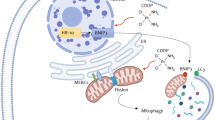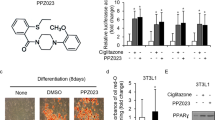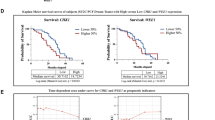Abstract
Bcl-2 overexpression is an important mechanism underlying the aggressive behavior of prostate cancer cells and their resistance to radio- or chemotherapy. HA14-1, a recently discovered organic Bcl-2 inhibitor, potently induces apoptosis in various human cancer cells. Sequential exposure of radioresistant LNCaP (wild-type (wt) p53), LNCaP/Bcl-2 (wt p53) and PC3 (mutant p53) prostate cancer cells to a minimally cytotoxic concentration of 10 μ M HA14-1 for 1 h followed by 1–6 Gy gamma radiation, resulted in a highly synergistic (combination index <1.0) induction of cell death as determined by an apoptosis assay at 72 h, and a clonogenicity assay at 12 days, after the initial treatment. The reverse treatment sequence did not cause a synergistic induction of cell death. When compared to individual treatments, cell death induced by the combined treatment was associated with dramatically increased reactive oxygen species (ROS) generation, c-Jun N-terminal kinase (JNK) activation, Bcl-2 phosphorylation, cytochrome c release, caspase-3 activation and DNA fragmentation. Exposure to either 200 μg/ml of the antioxidant alpha-tocopherol or 10 μ M JNK inhibitor SP600125 before the combined treatment resulted in decreased activation of JNK and caspase-3 as well as decreased DNA fragmentation. However, treatment with the pancaspase inhibitor carbobenzoxyl-valyl-alanyl-aspartyl-[O-methyl]-fluoromethylketone before the combined treatment inhibited apoptosis without affecting JNK activation, and this inhibitory effect was enhanced in the presence of alpha-tocopherol or SP600125. Taken together, our results indicate that HA14-1 potently sensitizes radioresistant LNCaP and PC3 cells to gamma radiation, regardless of the status of p53. ROS and JNK are important early signals that trigger both caspase-dependent and -independent cell death pathways and contribute to the apoptotic synergy induced by the combined treatments.
This is a preview of subscription content, access via your institution
Access options
Subscribe to this journal
Receive 50 print issues and online access
$259.00 per year
only $5.18 per issue
Buy this article
- Purchase on Springer Link
- Instant access to full article PDF
Prices may be subject to local taxes which are calculated during checkout








Similar content being viewed by others
Abbreviations
- HA14-1:
-
ethyl 2-amino-6-bromo-4-(1-cyano-2-ethoxy-2-oxoethyl)-4H-chromene-3-carboxylate
- ROS:
-
reactive oxygen species
- JNK:
-
c-Jun NH2-terminal kinase
- ER:
-
endoplasmic reticulum
- SSB:
-
single-strand break
- DSB:
-
double-strand break
- DMSO:
-
dimethyl sulfoxide
- H2DCFDA:
-
succinimidyl ester of dichlorodihydrofluorescein diacetate
- z-VAD-fmk:
-
carbobenzoxyl-valyl-alanyl-aspartyl-[O-methyl]-fluoromethylketone
- wt:
-
wild type
- CI:
-
combination index
- IP:
-
immunoprecipitation
References
Adams JM, Cory S . (1998). The Bcl-2 protein family: arbiters of cell survival. Science 281: 1322–1326.
An J, Chen Y, Huang Z . (2004). Critical upstream signals of cytochrome c release induced by a novel Bcl-2 inhibitor. J Biol Chem 279: 19133–19140.
Autorino R, Di Lorenzo G, Damiano R, De Placido S, D’Armiento M . (2003). Role of chemotherapy in hormone-refractory prostate cancer. Old issues, recent advances and new perspectives. Urol Int 70: 1–14.
Bauer JJ, Sesterhenn IA, Mostofi FK, McLeod DG, Srivastava S, Moul JW . (1996). Elevated levels of apoptosis regulator proteins p53 and bcl-2 are independent prognostic biomarkers in surgically treated clinically localized prostate cancer. J Urol 156: 1511–1516.
Belka C, Jendrossek V, Pruschy M, Vink S, Verheij M, Budach W . (2004). Apoptosis-modulating agents in combination with radiotherapy – current status and outlook. Int J Radiat Oncol Biol Phys 58: 542–554.
Catz SD, Johnson JL . (2003). BCL-2 in prostate cancer: a minireview. Apoptosis 8: 29–37.
Chaudhary KS, Abel PD, Stamp GW, Lalani E . (2001). Differential expression of cell death regulators in response to thapsigargin and adriamycin in Bcl-2 transfected DU145 prostatic cancer cells. J Pathol 193: 522–529.
Chendil D, Ranga RS, Meigooni D, Sathishkumar S, Ahmed MM . (2004). Curcumin confers radiosensitizing effect in prostate cancer cell line PC-3. Oncogene 23: 1599–1607.
Chou TC, Talalay P . (1984). Quantitative analysis of dose–effect relationships: the combined effects of multiple drugs or enzyme inhibitors. Adv Enzyme Regul 22: 27–55.
Denmeade SR, Lin XS, Isaacs JT . (1996). Role of programmed (apoptotic) cell death during the progression and therapy for prostate cancer. Prostate 28: 251–265.
Dewey WC, Miller HH, Leeper DB . (1971). Chromosomal aberrations and mortality of x-irradiated mammalian cells: emphasis on repair. Proc Natl Acad Sci USA 68: 667–671.
Fei P, El-Deiry WS . (2003). P53 and radiation responses. Oncogene 22: 5774–5783.
Garzotto M, Haimovitz-Friedman A, Liao WC, White-Jones M, Huryk R, Heston WD et al. (1999). Reversal of radiation resistance in LNCaP cells by targeting apoptosis through ceramide synthase. Cancer Res 59: 5194–5201.
Hahn P, Baral E, Cheang M, Math MC, Kostyra J, Roelss R . (1996). Long-term outcome of radical radiation therapy for prostatic carcinoma: 1967–1987. Int J Radiat Oncol Biol Phys 34: 41–47.
Hering FL, Lipay MV, Lipay MA, Rodrigues PR, Nesralah LJ, Srougi M . (2001). Comparison of positivity frequency of bcl-2 expression in prostate adenocarcinoma with low and high Gleason score. Sao Paulo Med J 119: 138–141.
Higuchi Y . (2003). Chromosomal DNA fragmentation in apoptosis and necrosis induced by oxidative stress. Biochem Pharmacol 66: 1527–1535.
Kimura K, Bowen C, Spiegel S, Gelmann EP . (1999). Tumor necrosis factor-alpha sensitizes prostate cancer cells to gamma-irradiation-induced apoptosis. Cancer Res 59: 1606–1614.
Kolesnick R, Fuks Z . (2003). Radiation and ceramide-induced apoptosis. Oncogene 22: 5897–5906.
Krajewska M, Krajewski S, Epstein JI, Shabaik A, Sauvageot J, Song K et al. (1996). Immunohistochemical analysis of bcl-2, bax, bcl-X, and mcl-1 expression in prostate cancers. Am J Pathol 148: 1567–1576.
Lei K, Davis RJ . (2003). JNK phosphorylation of Bim-related members of the Bcl2 family induces Bax-dependent apoptosis. Proc Natl Acad Sci USA 100: 2432–2437.
Lickliter JD, Wood NJ, Johnson L, McHugh G, Tan J, Wood F et al. (2003). HA14-1 selectively induces apoptosis in Bcl-2-overexpressing leukemia/lymphoma cells, and enhances cytarabine-induced cell death. Leukemia 17: 2074–2080.
Lin A, Dibling B . (2002). The true face of JNK activation in apoptosis. Aging Cell 1: 112–116.
Lin X, Zhang F, Bradbury CM, Kaushal A, Li L, Spitz DR et al. (2003). 2-Deoxy-D-glucose-induced cytotoxicity and radiosensitization in tumor cells is mediated via disruptions in thiol metabolism. Cancer Res 63: 3413–3417.
Marchal S, Bezdetnaya L, Guillemin F . (2004). Modality of cell death induced by Foscan-based photodynamic treatment in human colon adenocarcinoma cell line HT29. Biochemistry (Moscow) 69: 45–49.
McConkey DJ, Greene G, Pettaway CA . (1996). Apoptosis resistance increases with metastatic potential in cells of the human LNCaP prostate carcinoma line. Cancer Res 56: 5594–5599.
Mikkelsen RB, Wardman P . (2003). Biological chemistry of reactive oxygen and nitrogen and radiation-induced signal transduction mechanisms. Oncogene 22: 5734–5754.
Milella M, Estrov Z, Kornblau SM, Carter BZ, Konopleva M, Tari A et al. (2002). Synergistic induction of apoptosis by simultaneous disruption of the Bcl-2 and MEK/MAPK pathways in acute myelogenous leukemia. Blood 99: 3461–3464.
Mishra KP . (2004). Cell membrane oxidative damage induced by gamma-radiation and apoptotic sensitivity. J Environ Pathol Toxicol Oncol 23: 61–66.
Ortiz MA, Lopez-Hernandez FJ, Bayon Y, Pfahl M, Piedrafita FJ . (2001). Retinoid-related molecules induce cytochrome c release and apoptosis through activation of c-Jun NH(2)-terminal kinase/p38 mitogen-activated protein kinases. Cancer Res 61: 8504–8512.
Park J, Kim I, Oh YJ, Lee K, Han PL, Choi EJ . (1997). Activation of c-Jun N-terminal kinase antagonizes an anti-apoptotic action of Bcl-2. J Biol Chem 272: 16725–16728.
Phillips DC, Allen K, Griffiths HR . (2002). Synthetic ceramides induce growth arrest or apoptosis by altering cellular redox status. Arch Biochem Biophys 407: 15–24.
Raffo AJ, Perlman H, Chen MW, Day ML, Streitman JS, Buttyan R . (1995). Overexpression of bcl-2 protects prostate cancer cells from apoptosis in vitro and confers resistance to androgen depletion in vivo. Cancer Res 55: 4438–4445.
Reed JC, Zha H, Aime-Sempe C, Takayama S, Wang HG . (1996). Structure-function analysis of Bcl-2 family proteins. Regulators of programmed cell death. Adv Exp Med Biol 406: 99–112.
Rosser CJ, Reyes AO, Vakar-Lopez F, Levy LB, Kuban DA, Hoover DC et al. (2003). Bcl-2 is significantly overexpressed in localized radio-recurrent prostate carcinoma, compared with localized radio-naive prostate carcinoma. Int J Radiat Oncol Biol Phys 56: 1–6.
Scherr DS, Vaughan EDJ, Wei J, Chung M, Felsen D, Allbright R et al. (1999). BCL-2 and p53 expression in clinically localized prostate cancer predicts response to external beam radiotherapy. J Urol 162: 12–16.
Scott SL, Higdon R, Beckett L, Shi XB, deVere White RW, Earle JD et al. (2002). BCL2 antisense reduces prostate cancer cell survival following irradiation. Cancer Biother Radiopharm 17: 647–656.
Shaffer DR, Scher HI . (2003). Prostate cancer: a dynamic illness with shifting targets. Lancet Oncol 4: 407–414.
Szostak MJ, Kyprianou N . (2000). Radiation-induced apoptosis: predictive and therapeutic significance in radiotherapy of prostate cancer (review). Oncol Rep 7: 699–706.
Tang DG, Porter AT . (1997). Target to apoptosis: a hopeful weapon for prostate cancer. Prostate 32: 284–293.
Tepper AD, de Vries E, van Blitterswijk WJ, Borst J . (1999). Ordering of ceramide formation, caspase activation, and mitochondrial changes during CD95- and DNA damage-induced apoptosis. J Clin Invest 103: 971–978.
Todaro M, Catalano M, Di Liberto D, Patti M, Zerilli M, Di Gaudio F et al. (2002). High levels of exogenous C2-ceramide promote morphological and biochemical evidences of necrotic features in thyroid follicular cells. J Cell Biochem 86: 162–173.
Tournier C, Hess P, Yang DD, Xu J, Turner TK, Nimnual A et al. (2000). Requirement of JNK for stress-induced activation of the cytochrome c-mediated death pathway. Science 288: 870–874.
Tsuruta F, Sunayama J, Mori Y, Hattori S, Shimizu S, Tsujimoto Y et al. (2004). JNK promotes Bax translocation to mitochondria through phosphorylation of 14-3-3 proteins. EMBO J 23: 1889–1899.
Vivo C, Liu W, Broaddus VC . (2003). c-Jun N-terminal kinase contributes to apoptotic synergy induced by tumor necrosis factor-related apoptosis-inducing ligand plus DNA damage in chemoresistant, p53 inactive mesothelioma cells. J Biol Chem 278: 25461–25467.
Wang JL, Liu D, Zhang ZJ, Shan S, Han X, Srinivasula SM et al. (2000). Structure-based discovery of an organic compound that binds Bcl-2 protein and induces apoptosis of tumor cells. Proc Natl Acad Sci USA 97: 7124–7129.
Xiao D, Choi S, Johnson DE, Vogel VG, Johnson CS, Trump DL et al. (2004). Diallyl trisulfide-induced apoptosis in human prostate cancer cells involves c-Jun N-terminal kinase and extracellular-signal regulated kinase-mediated phosphorylation of Bcl-2. Oncogene 23: 5594–5606.
Yamaguchi H, Paranawithana SR, Lee MW, Huang Z, Bhalla KN, Wang HG . (2002). Epothilone B analogue (BMS-247550)-mediated cytotoxicity through induction of Bax conformational change in human breast cancer cells. Cancer Res 62: 466–471.
Yu N, Aramini JM, Germann MW, Huang Z . (2000). Reactions of salicylaldehydes with alkyl cyanoacetates on the surface of solid catalysts: syntheses of 4H-chromene derivatives. Tetrahedron Lett 41: 6993–6996.
Zhan Q, Kontny U, Iglesias M, Alamo IJ, Yu K, Hollander MC et al. (1999). Inhibitory effect of Bcl-2 on p53-mediated transactivation following genotoxic stress. Oncogene 18: 297–304.
Acknowledgements
This work was supported by grants from the American Cancer Society, the National Institutes of Health and the Sidney Kimmel Foundation for Cancer Research.
Author information
Authors and Affiliations
Corresponding author
Rights and permissions
About this article
Cite this article
An, J., Chervin, A., Nie, A. et al. Overcoming the radioresistance of prostate cancer cells with a novel Bcl-2 inhibitor. Oncogene 26, 652–661 (2007). https://doi.org/10.1038/sj.onc.1209830
Received:
Revised:
Accepted:
Published:
Issue Date:
DOI: https://doi.org/10.1038/sj.onc.1209830
Keywords
This article is cited by
-
7-Geranyloxcycoumarin enhances radio sensitivity in human prostate cancer cells
Molecular Biology Reports (2023)
-
PIM kinase inhibition: co-targeted therapeutic approaches in prostate cancer
Signal Transduction and Targeted Therapy (2020)
-
miR-183-5p enhances the radioresistance of colorectal cancer by directly targeting ATG5
Journal of Biosciences (2019)
-
Treating cancerous large airway stenosis with staging radioactive particle implantation guided by computed tomography and fiber bronchoscopy: a clinical study
World Journal of Surgical Oncology (2017)
-
Cathepsin L suppression increases the radiosensitivity of human glioma U251 cells via G2/M cell cycle arrest and DNA damage
Acta Pharmacologica Sinica (2015)



